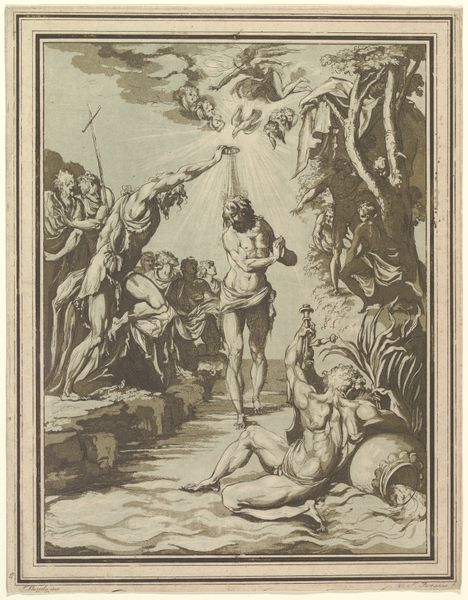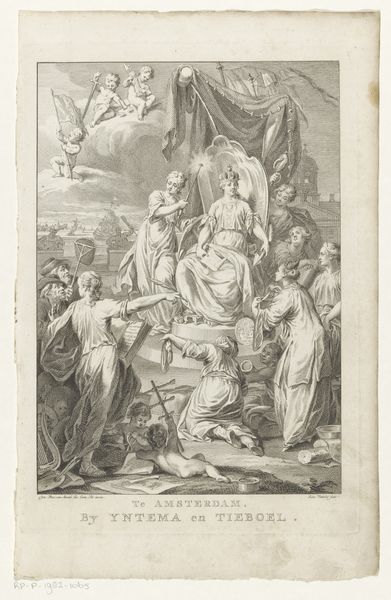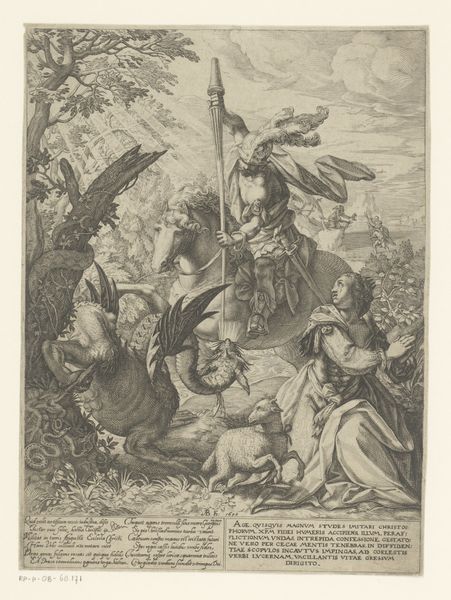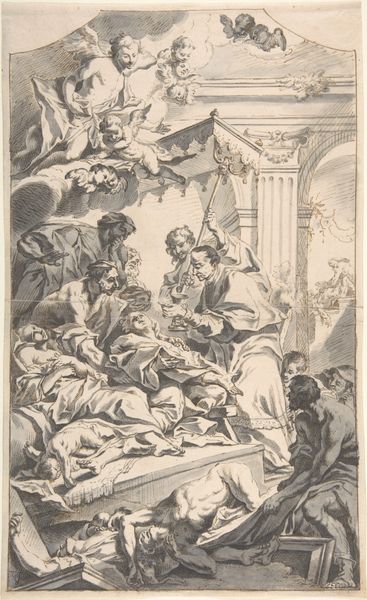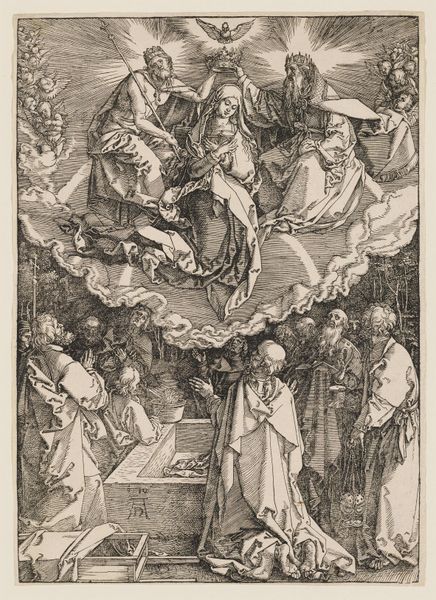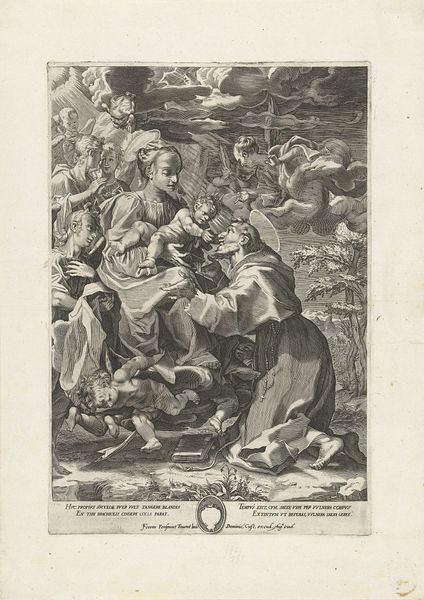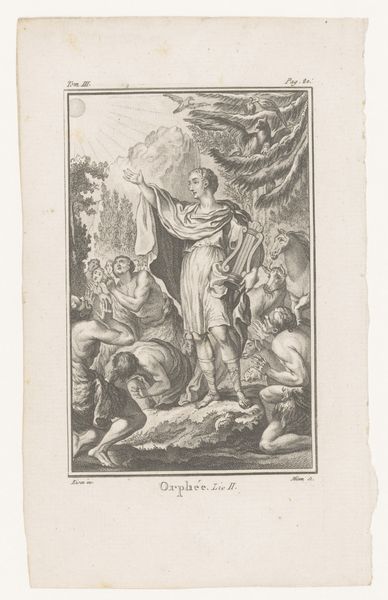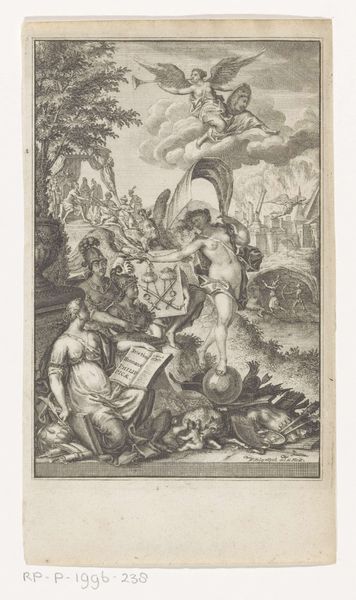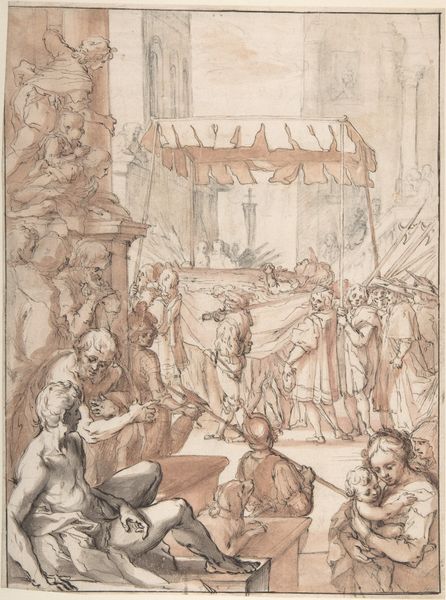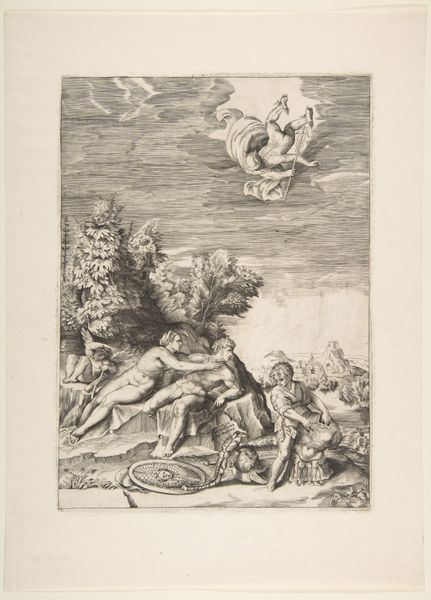
drawing, print, ink, pen
#
drawing
#
narrative-art
#
baroque
# print
#
pen sketch
#
figuration
#
ink
#
pen
#
crucifixion
#
history-painting
Dimensions: image: 7 5/8 x 4 13/16 in. (19.4 x 12.3 cm), trimmed to image
Copyright: Public Domain
Curator: Here we have Claude Gillot's "Carrying the Cross," an ink and pen drawing, made sometime between 1685 and 1722. Editor: It feels chaotic, almost brutally raw in its depiction of suffering. The ink lines are so immediate, and dense in places; they give the impression of a hurried, desperate scene. Curator: Well, the Baroque period certainly embraced emotional intensity, and Gillot captures the drama of Christ's procession to Calvary. Think about the social function of this image—its role in shaping religious sentiment. This wasn’t simply art for art's sake. Editor: Right, and if you look closely at the material – the paper seems almost flimsy – it reminds you this wasn't necessarily conceived of as some precious object. I imagine this piece might have functioned almost as a preparatory sketch or an easily circulated print, reproduced for the masses. How does this change its accessibility to religious subjects in Baroque society? Curator: Exactly. Prints played a significant role in disseminating religious narratives to a wider audience, particularly among those who couldn't access paintings or sculptures. Consider also, who were the consumers? Were they wealthy patrons commissioning works, or religious orders seeking tools for education and devotion? These details shape the purpose. Editor: Yes. And thinking materially again, I’m wondering about the choices involved in the drawing technique itself. What were the work conditions like for Gillot, and his contemporaries in producing prints? How did labor relate to artistic choices? How accessible would ink, pens, or the materials for mass reproduction have been? Curator: Interesting questions. We also have to look at the institutional aspect – what role did the Académie Royale play in setting standards for history painting, and how did Gillot’s print fit into or challenge these conventions? Was he pushing back against established styles to make more affordable and accessible art? Editor: Thinking about these things provides an entryway into not just the final artwork itself, but a much wider view of social circumstances in the early eighteenth century. Curator: Absolutely. And I believe analyzing those wider institutional contexts help reveal this art’s role and impact, helping to flesh out its social context. Editor: Thanks! It's a powerful way to read between the lines of artistic expression.
Comments
No comments
Be the first to comment and join the conversation on the ultimate creative platform.
